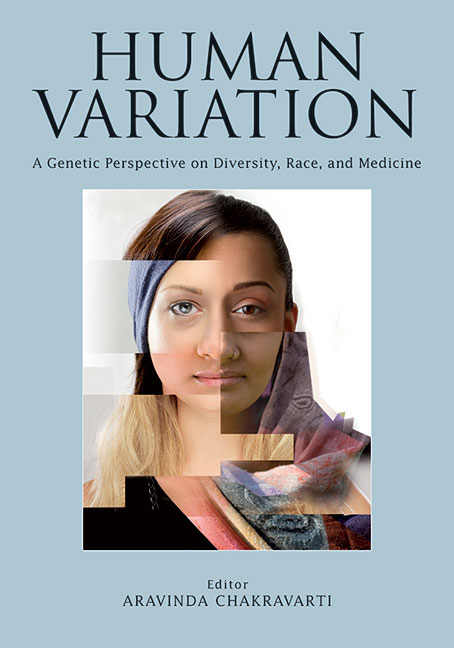Human Variation: A Genetic Perspective on Diversity, Race, and MedicinePosted in Africa, Anthologies, Asian Diaspora, Books, Canada, Caribbean/Latin America, Europe, Health/Medicine/Genetics, History, Latino Studies, Media Archive, Politics/Public Policy, Social Science, United States on 2015-10-21 02:26Z by Steven |
Human Variation: A Genetic Perspective on Diversity, Race, and Medicine
Cold Spring Harbor Laboratory Press
2014
131 pages
(21 4C, 5B&W), index
Hardcover ISBN: 978-1-621820-90-1
Paperback ISBN: 978-1-936113-25-5
Edited by:
Aravinda Chakravarti, Professor of Medicine, Pediatrics, Molecular Biology & Genetics, and, Biostatistics
Johns Hopkins University School of Medicine, Institute of Genetic Medicine
Since the appearance of modern humans in Africa around 200,000 years ago, we have migrated around the globe and accumulated genetic variations that affect various traits, including our appearance, skin color, food tolerance, and susceptibility to different diseases. Large-scale DNA sequencing is now allowing us to map the patterns of human genetic variation more accurately than ever before, trace our ancestries, and develop personalized therapies for particular diseases. It is also reinforcing the idea that human populations are far from homogeneous, are highly intermixed, and do not fall into distinct races or castes that can be defined genetically.
This book provides a state-of-the-art view of human genetic variation and what we can infer from it, surveying the genetic diversity seen in Africa, Europe, the Americas, and India. The contributors discuss what this can tell us about human history and how it can be used to improve human health. They also caution against assumptions that differences between individuals always stem from our DNA, stressing the importance of nongenetic forces and pointing out the limits of our knowledge. The book is thus essential reading for all human geneticists and anyone interested in how we differ and what this means.
Contents
- Preface
- Perspectives on Human Variation through the Lens of Diversity and Race / Aravinda Chakravarti
- What Type of Person Are You? Old-Fashioned Thinking Even in Modern Science / Kenneth M. Weiss and Brian W. Lambert
- Social Diversity in Humans: Implications and Hidden Consequences for Biological Research / Troy Duster
- Demographic Events and Evolutionary Forces Shaping European Genetic Diversity / Krishna R. Veeramah and John Novembre
- Genetic Variation and Adaptation in Africa: Implications for Human Evolution and Disease / Felicia Gomez, Jibril Hirbo and Sarah A. Tishkoff
- A Genomic View of Peopling and Population Structure of India / Partha P. Majumder and Analahba Basu
- How Genes Have Illuminated the History of Early Americans and Latino Americans / Andres Ruiz-Linares
- Can Genetics Help Us Understand Indian Social History? / Romila Thapar
- Race in Biological and Biomedical Research / Richard S. Cooper
- Personalized Medicine and Human Genetic Diversity / Yi-Fan Lu, David B. Goldstein, Misha Angrist, and Gianpiero Cavalleri
- Index
